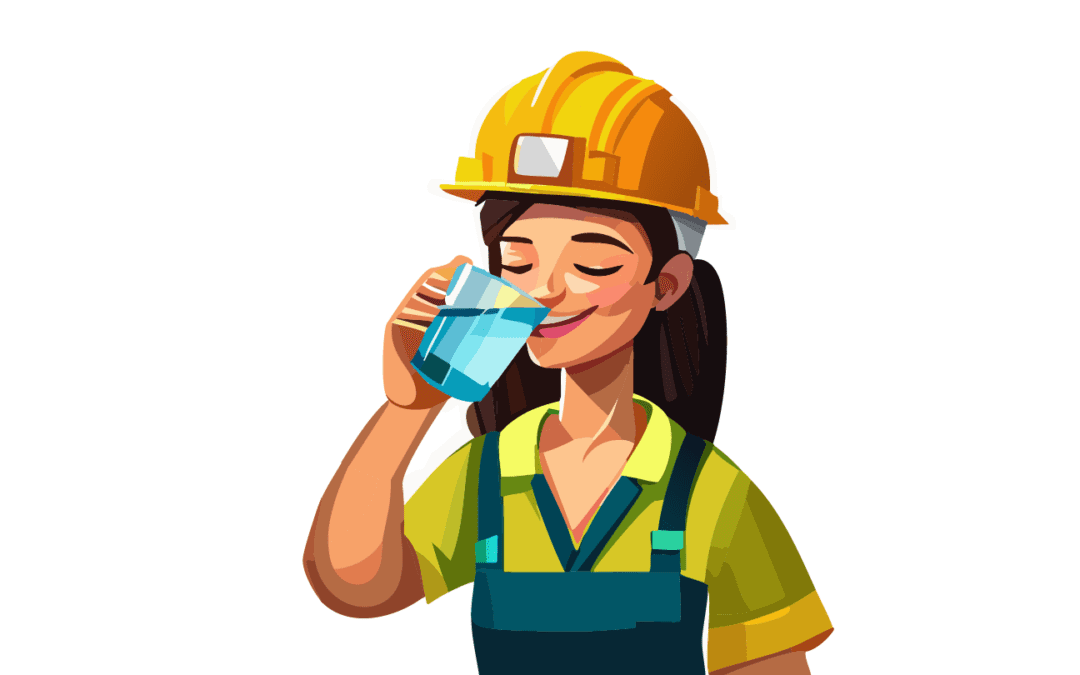For many, summer means barbecues, golf, frozen treats and fun in the sun. But the sun can quickly become dangerous, even lethal, for those who work outdoors.
Body Temperature and Heat Stress Hazards
Managing heat stress hazards is a critical issue. Typical shifts for construction workers are often during the hottest hours. This prolonged exposure to heat hazards, coupled with the physical demands of the job, exacerbates the risk of heat-related illnesses.
Alarmingly, heat stress can happen even when temperatures are moderate.
Our core temperature must stay within 1.8°F of normal (about 98.6°F) for the body to function properly. The Occupational Safety and Health Administration (OSHA) does not recommend that workers surpass an internal temperature of 100.4°F.
But a study by the University of New Mexico found that despite a construction site being a relatively moderate 88°F, 43% of workers experienced an internal body temperature of 100.4°F. When humidity, sun radiation and limited shade are added to the mix, even moderate temperatures pose a significant risk of heat stress.
Staying Hydrated is Essential
Adequate hydration is vital to preventing heat-related hazards. The same study by UNM found that over 60% of workers arrived at the site dehydrated despite the company’s strong push for hydrating before, during and after work. Dehydration interferes with blood pressure, heart rate and body temperature, significantly increasing the risk of heat-related illness. Consequently, it is essential that workers begin their shifts well-hydrated and maintain adequate fluid intake throughout the day.
But what does that look like exactly?
Employees should drink 8 oz of water every 15-20 minutes (but not exceed 48 oz per hour) during moderate activities in the heat, and opt for sports beverages containing balanced electrolytes during prolonged sweating. Drinks with high caffeine or sugar content only make dehydration worse and should be avoided.
Employers should provide and regularly check drinking stations where workers can refill water bottles or fill individual drinking cups. Employees should also have access to toilet facilities to encourage proper hydration throughout the day.
Heat Stress Prevention to Mitigate Hazards
Besides focusing on hydration, how else can employers help workers beat the heat and mitigate heat stress hazards?
#1: Smart Scheduling
If possible, schedule shifts during cooler times of the day, postpone non-urgent work, or set specific recovery times and encourage workers to take breaks if work must take place during afternoon hours.
#2: Keep it Cool
Ensure cooling stations are equipped with shaded or air-conditioned areas, mist fans or containers of cool water (50-68°F) for hand and forearm immersion to reduce workers’ core body temperatures.
#3: Lighten the Load
Provide access to tools and machinery to reduce unnecessary physical exertion. Increasing crew size can also distribute the workload more evenly.
Beat the Heat with Safety Training
Continuous exposure to heat hazards can lead to declines in physical capacity and mental alertness, increasing the likelihood of accidents and other safety incidents. Safety training can educate both managers and workers on recognizing signs of heat illness, understanding personal heat thresholds, and knowing when to ask for help.
Here are possible safety training topics to keep your people safe this summer:
What to Wear
Workers should choose light-colored, loose-fitting clothing made of breathable fabrics or moisture-wicking materials that encourage air circulation and sweat evaporation. Wide-brimmed hats provide shade for the face and neck, while UV-protective clothing can shield the skin from harmful solar radiation. Employers should provide personal protective equipment (PPE) suitable for hot weather conditions.
How to Build Heat Tolerance
When acclimatizing to heat, OSHA recommends the Rule of 20%. New workers should only work 20% of a normal day on their first day in the heat, with a gradual increase of no more than 20% each subsequent day. This allows workers to adjust gradually (typically over 7-14 days) while under close supervision to ensure they adapt to hotter environments safely.
Experienced workers can be limited to 50% heat exposure on day 1, 60% on day 2, 80% on the day 3, and then return to full-time work on day 4. Managers should be aware that acclimatization can be lost in just a few days away from work and the process must begin again.
Recognizing and Responding to Heat-Related Illnesses
Understanding the symptoms of different heat-related illnesses and knowing how to respond is crucial to saving lives. This will be covered in depth in next week’s blog post.
Summer is Hot; Keep Your Workers Cool
Managing heat stress hazards in the construction industry is absolutely vital. Lives depend on it. By ensuring proper hydration, implementing strategic scheduling and providing adequate safety training, employers can significantly reduce the risk of heat stress among workers. These measures not only protect workers’ health and safety but also enhance productivity and project timelines, ensuring a safer and more efficient working environment.
To learn how to use safety training to mitigate your own heat-related hazards, schedule a meeting to speak with a Tyfoom training consultant today.

